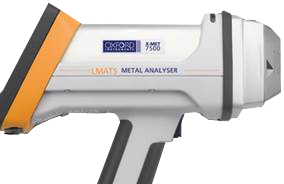Lead Paint Analysis, Detection and Inspection
Beware of lead paint when renovating and repairing
Before 1970, paints containing high levels of lead were used in many Australian structures ie domestic houses and other infrastructure note Homes built before 1970 are most at risk, but those built more recently may also have paint containing lead
The recommended amount of lead in paint has progressively been reduced from 50% before 1965, to 1% in 1965. In 1992, it was reduced to 0.25%, and in 1997 it was further reduced to 0.1%.
The dangers of lead in paints has been extensively publicised. Lead in paint is a problem only if it is damaged or disturbed. Paint in good condition that is not flaking or chalking, or is covered by well maintained lead free paint is not a hazard in itself.
Are you in danger of lead paint?
People renovating their houses or repairing infrastructure are in the most danger
LMATS regularly test for lead in paint and other materials on houses buildings and infrastructure like bridges etc.
LMATS can also test for lead in toys.
LMATS Portable lead paint XRF testing on location is the fastest and most accurate way to determine the amount of lead paint contamination in any area.

- Testing is done using our Oxford XMET 7500 with calibrated reference lead paint film samples
- Testing can be done on interior and exterior building surfaces
- We can analyse lead contents in the range of 0.3 to 5.0 mg/cm², including determining whether the content is below 0.3 or greater than 5.0 mg/cm²
- Paints containing as much as 50% lead were used on the inside and outside of homes built before 1950. Until the late 1960s, paint with more than 1% lead was still being used.
Advantages of the Portable XRF method versus lead paint kits and other methods:
- The analysis is non-destructive (compared with sampling kits which require a sample to be taken and analysed by a lab)
- The analysis gives an instant indication of the presence of lead (compared with sampling methods)
- The analysis gives the content of lead (compared with lead colour change kits which give a Y/N answer)
- Can easily analyse many locations or painted surfaces without damaging or requiring surface preparation
- Multiple samples can be analysed with lower cost and instant results than laboratory methods
AS 4361.2 Guide to Lead Paint Management Part 2: Residential and Commercial Buildings.
AS 4361.1 Guide to Lead Paint Management—Industrial Applications.
AS 2311 Painting of Buildings.
AS 8124 Safety of Toys
Other references:
National Occupational Health and Safety Commission Control of Inorganic Lead at Work AGPS, 1994.
This Worksafe Australia Standard includes the National Standard for the Control of Inorganic Lead
at Work (NOHSC: 1012 (1994)) and the National Code of Practice for the Control and Safe Use of
Inorganic Lead at Work (NOHSC: 2015 (1994)).
National Occupational Health and Safety Commission Exposure Standards for Atmospheric
Contaminants in the Occupational Environment (NOHSC:1003(1995)).
Safe Work Australia (Review of hazards and health effects of inorganic lead—implications for WHS
regulatory policy) (2014).
Australian Government Department of Environment Information Sheet Lead Alert: The six step guide to painting your home.
At LMATS we make accessing lead paint analysis Services exceptionally effortless.
Simply contact us at LMATS for all yout lead paint analysis requirements.






